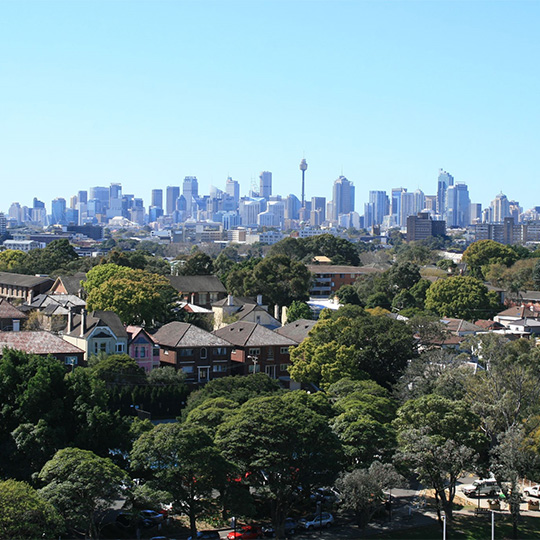The unemployment rate fell 0.1 percentage point to 3.6 per cent in May (seasonally adjusted), according to data released today by the Australian Bureau of Statistics (ABS).
Bjorn Jarvis, ABS head of labour statistics, said: “with employment increasing by around 76,000 people and the number of unemployed decreasing by 17,000 people, the unemployment rate fell to 3.6 per cent.
“The strong growth in employment in May followed a small decrease in April, around Easter, when employment fell by more than it usually would over the holiday period.
“Looking over the past two months, the employment increases average out to around 36,000 extra employed people each month. This is still around the average over the past year of 39,000 people a month.”
The increase in employment in May also saw the number of employed people in Australia reach 14 million for the first time.
“Just before the start of the pandemic almost 13 million people were employed in Australia. In May 2023, this had risen to just over 14 million people,” Mr Jarvis said.
Similarly, the employment-to-population ratio rose 0.2 percentage points to 64.5 per cent, a record high.
“In addition to there being around a million more employed people than before the pandemic, a much higher share of the population is employed. In May 2023, 64.5 per cent of people 15 years or older were employed, an increase of more than two percentage points (2.1) since March 2020,” Mr Jarvis said.
The participation rate increased 0.1 percentage point to 66.9 per cent. It rose 0.2 percentage points for women, to 62.7 per cent, and remained at 71.2 per cent for men.
“A greater share of women in Australia are employed than ever before, with their employment to population ratio and participation rate both at record highs in May,” Mr Jarvis said.
Hours worked
Monthly hours worked decreased by 1.8 per cent (seasonally adjusted). This followed a 2.7 per cent increase in April, when fewer people than usual were working reduced hours over the Easter period, and remained elevated in May, around 0.9 per cent higher than March.
| Hours | Employed | |
|---|---|---|
| Jan-20 | 100.4 | 100.1 |
| Feb-20 | 100.3 | 100 |
| Mar-20 | 100 | 100 |
| Apr-20 | 89.9 | 95.5 |
| May-20 | 90.8 | 93.3 |
| Jun-20 | 94.3 | 95.1 |
| Jul-20 | 95.4 | 95.9 |
| Aug-20 | 95.7 | 97.1 |
| Sep-20 | 95.6 | 96.9 |
| Oct-20 | 97.6 | 98.1 |
| Nov-20 | 99.2 | 98.6 |
| Dec-20 | 99.1 | 99 |
| Jan-21 | 94.7 | 99.4 |
| Feb-21 | 99.8 | 99.8 |
| Mar-21 | 102.2 | 100.3 |
| Apr-21 | 100.7 | 100.2 |
| May-21 | 102.5 | 100.9 |
| Jun-21 | 100.9 | 101.1 |
| Jul-21 | 100.9 | 101.2 |
| Aug-21 | 96.8 | 100.2 |
| Sep-21 | 97.9 | 99.2 |
| Oct-21 | 97.8 | 98.9 |
| Nov-21 | 102.1 | 101.7 |
| Dec-21 | 103.3 | 102.4 |
| Jan-22 | 95.4 | 102.8 |
| Feb-22 | 103.2 | 103.4 |
| Mar-22 | 102.9 | 103.6 |
| Apr-22 | 104 | 104 |
| May-22 | 105 | 104.3 |
| Jun-22 | 105.1 | 105.1 |
| Jul-22 | 105 | 105 |
| Aug-22 | 105.8 | 105.4 |
| Sep-22 | 105.8 | 105.6 |
| Oct-22 | 108.3 | 105.9 |
| Nov-22 | 107.9 | 106.3 |
| Dec-22 | 107 | 106.2 |
| Jan-23 | 104.8 | 106.3 |
| Feb-23 | 108.8 | 106.8 |
| Mar-23 | 109 | 107.4 |
| Apr-23 | 112 | 107.3 |
| May-23 | 110 | 107.9 |
Source: Labour Force, Australia, Tables 1 and 19
“Even though hours worked fell in the latest month, their strength since late 2022, relative to employment growth, shows the demand for labour in a tight market is being met, to some extent, by people working more hours,” Mr Jarvis said.
The proportion of employed people working fewer hours than usual was only slightly higher than its May pre-pandemic average (24.3 per cent, compared to a pre-pandemic average of 22.4 per cent).
“While more people than usual worked less because they were sick (4.2 per cent, compared with a May pre-pandemic average of 3.5 per cent), it was much less than in May 2022 (5.8 per cent) during the Omicron period,” Mr Jarvis said.
Underemployment and underutilisation
The underemployment rate rose 0.3 percentage points to 6.4 per cent, following a 0.1 percentage point fall in April.
“The underemployment rate is still low in historic terms, around 2.3 percentage points lower than before the pandemic,” Mr Jarvis said.
The underutilisation rate, which combines the unemployment and underemployment rates, rose 0.2 percentage points to 10.0 per cent, which is 3.9 percentage points lower than March 2020.
Underlying trend data
The latest monthly percentage increase in trend employment was higher than the monthly average for the 20 years before the pandemic (0.3 per cent, compared with 0.2 per cent).
“The trend data continues to show the strength in both employment and hours worked, compared to their historical averages,” Mr Jarvis said.
“Growth in hours worked continues to be particularly pronounced. In trend terms, they increased around 0.4 per cent in May 2023, which is around double the longer-term average of 0.2 per cent and also faster than the 0.3 per cent growth in employment.”
| Hours | Employed | |
|---|---|---|
| May-22 | 100 | 100 |
| Jun-22 | 100.4 | 100.3 |
| Jul-22 | 100.8 | 100.6 |
| Aug-22 | 101.2 | 100.8 |
| Sep-22 | 101.6 | 101.1 |
| Oct-22 | 102 | 101.3 |
| Nov-22 | 102.5 | 101.5 |
| Dec-22 | 103 | 101.7 |
| Jan-23 | 103.5 | 102 |
| Feb-23 | 104 | 102.2 |
| Mar-23 | 104.5 | 102.5 |
| Apr-23 | 105 | 102.8 |
| May-23 | 105.4 | 103.1 |
Source: Labour Force, Australia, Table 1 and 19
The unemployment rate remained at 3.5 per cent for the tenth consecutive month, after earlier data was revised down slightly.
The underemployment rate rose slightly to 6.3 per cent.
The participation rate remained steady at 66.8 per cent and the employment to population ratio remained at 64.4 per cent.
“Looking across the range of indicators – strong growth in hours worked, the elevated employment-to-population ratio and participation rate, along with the low unemployment and underemployment rates – they all point to a continuing tight labour market,” Mr Jarvis said.








